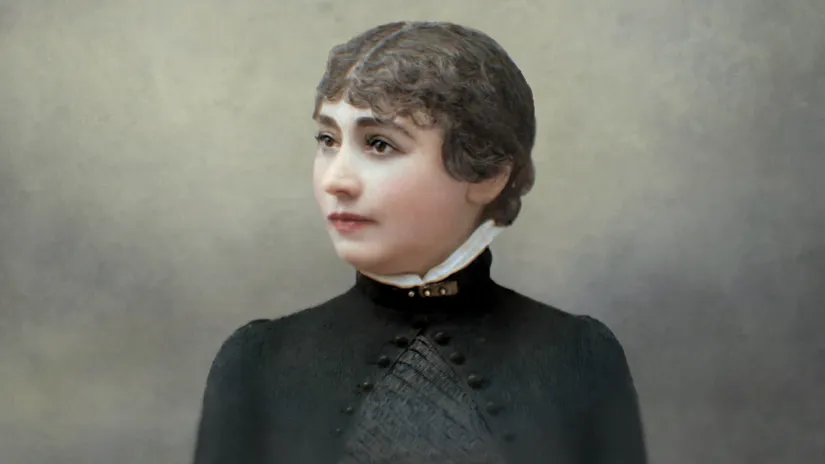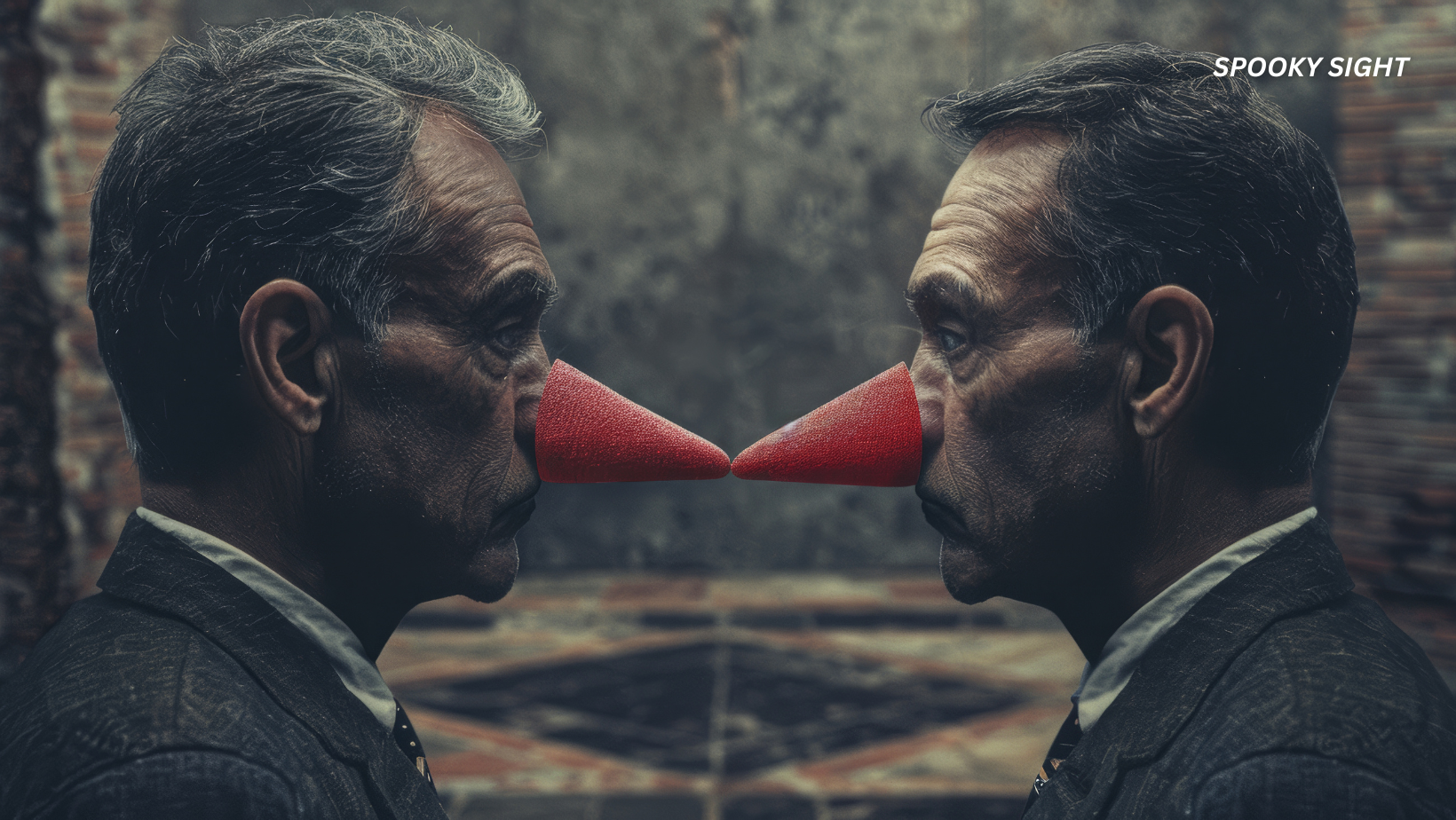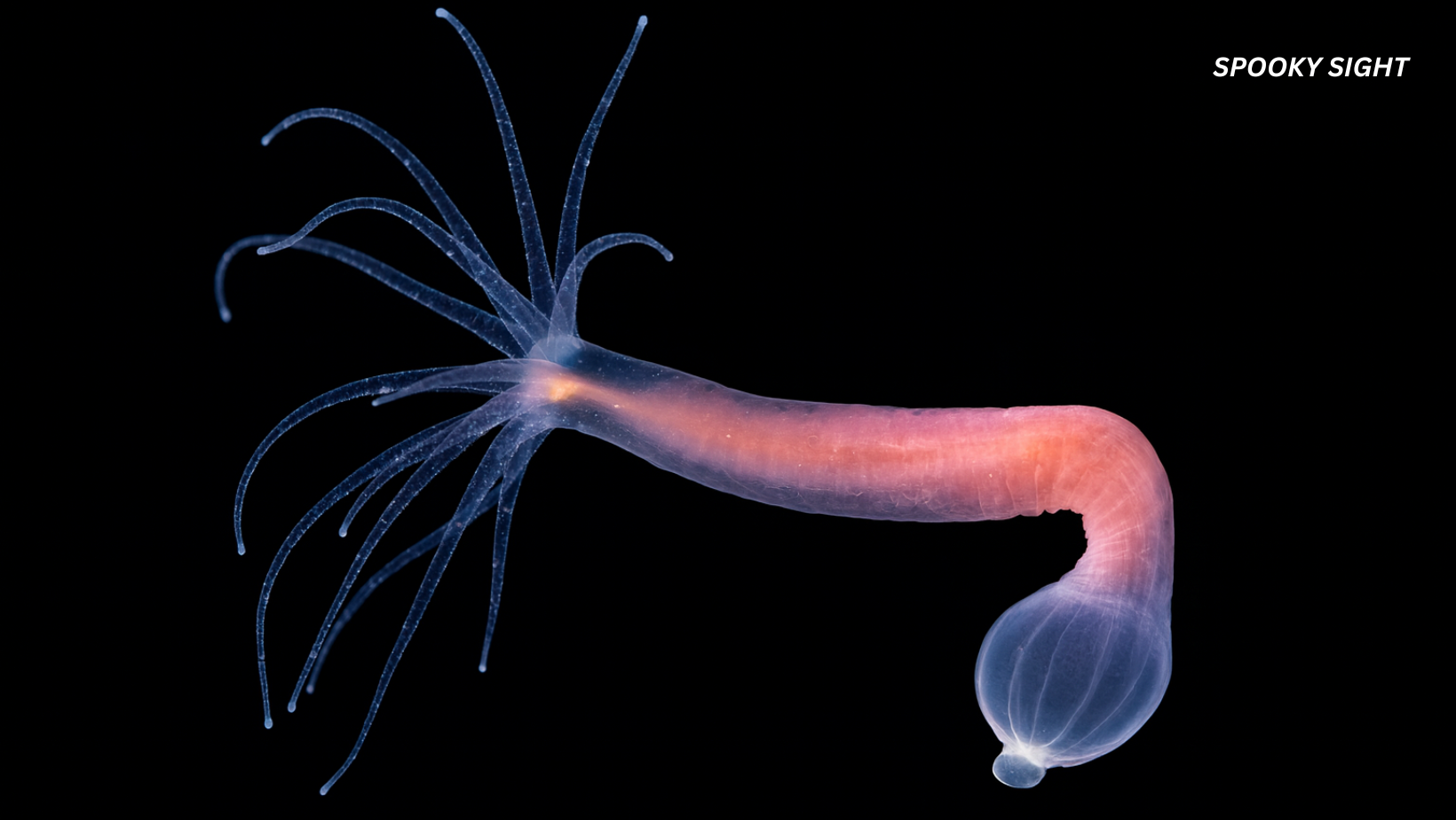Sarah Winchester, widow of the heir to the Winchester Repeating Arms Company, is best known for her eccentric and sprawling mansion in San Jose, California.
After inheriting a vast fortune in the late 19th century, Sarah became consumed by grief and influenced by spiritualism.
Believing she was haunted by the spirits of those killed by Winchester rifles, she embarked on a continuous construction project that resulted in the infamous Winchester Mystery House.
So, let’s discover more about her early life, the tragedies she faced, her real estate ventures, and the enduring legacy of her mysterious home.
In this article:
Early Life and Background
Childhood and Family
Sarah Lockwood Pardee was born in September 1839 in New Haven, Connecticut, into a prominent and well-off family.
Her father (Leonard Pardee) was a successful carriage manufacturer. In fact, his business was booming enough to afford a comfortable and affluent lifestyle.
Sarah’s mother (Sarah Burns) also came from a well-respected local family. Her marriage with Leonard increased the family’s high social standing in New Haven.
As for Sarah, she was one of six children. Growing up in a prosperous household, she had access to many privileges—that were not common for women of her time.
The family’s wealth and status allowed her to receive an exceptional education and exposure to various cultural and intellectual pursuits.
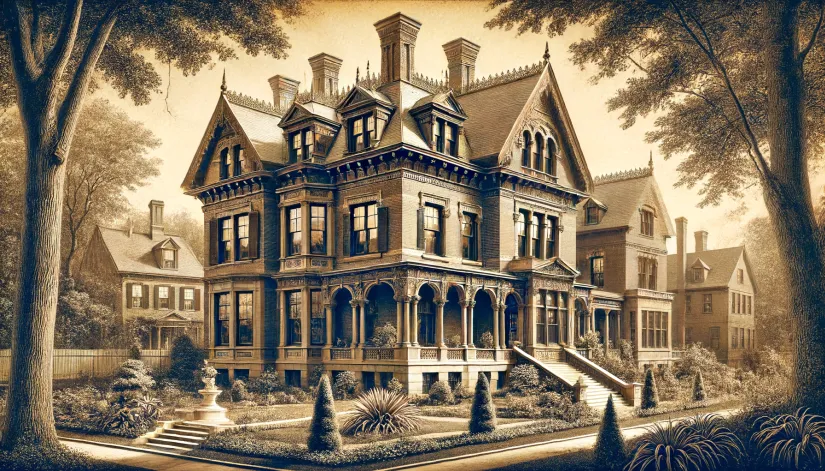
Education and Early Influences
Speaking of education, Sarah’s schooling was extensive and thorough. She was educated by a private French tutor and took music lessons.
In fact, she was known to be a talented musician and had a deep appreciation for the works of classical authors like William Shakespeare.
Related: Hinton Ampner Haunting: Restless Ghosts, Poltergeist, or Ancient Curse?
By age 12, Sarah was fluent in multiple languages, including Latin, French, Spanish, and Italian.
This strong foundation and schooling in culture and art would later influence her decisions and actions—particularly after the deaths of her husband and child—leading her to become a notable figure in her own right.
Marriage to William Wirt Winchester
Meeting and Marriage
Sarah Lockwood Pardee met William Wirt Winchester (the heir to the Winchester Repeating Arms Company) in New Haven.
And frankly, there’s no surprise the two met.
Their families moved in the same social circles. Attended the same church. Shared similar social statuses.
All these “links” brought Sarah and William together, and they married on September 30, 1862.
Their early married life was full of promise.
As the son of Oliver Winchester (the founder of the Winchester Repeating Arms Company), William was set to inherit a considerable fortune and play a significant role in the family business.
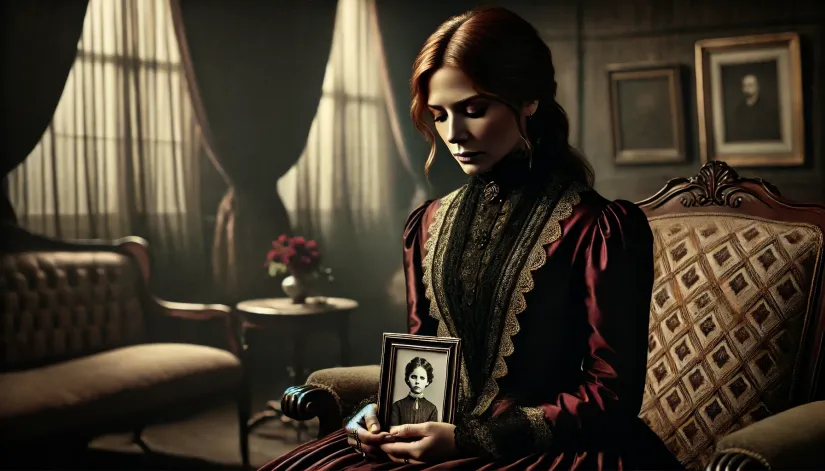
Tragic Losses
But life threw some serious curveballs their way. In 1866, Sarah and William welcomed their daughter (Annie Pardee Winchester) into the world.
Sadly, little Annie passed away just over a month later from marasmus—a severe form of malnutrition. It was a heartbreaking loss that hit Sarah hard and left her in deep mourning.
And the hits kept coming.
On March 7, 1880, William’s father, Oliver Winchester, died, passing the reins of the Winchester Repeating Arms Company to William. But William’s time at the helm was tragically short.
Related: Stockwell Poltergeist: How One Servant Fooled Everyone
In 1881—just a year after his father’s death—William died from tuberculosis at the age of 43. This left Sarah widowed and devastated.
These back-to-back tragedies took a heavy toll on Sarah. Losing her daughter, father-in-law, and husband in such a short period was incredibly hard to bear.
Financially, she inherited a massive fortune (including a 50% stake in the Winchester Repeating Arms Company and an income of $1,000 a day), making her one of the wealthiest women in the world.
But the money couldn’t fill the emotional void left by her losses, which (as we will see soon) profoundly influenced the rest of her life.
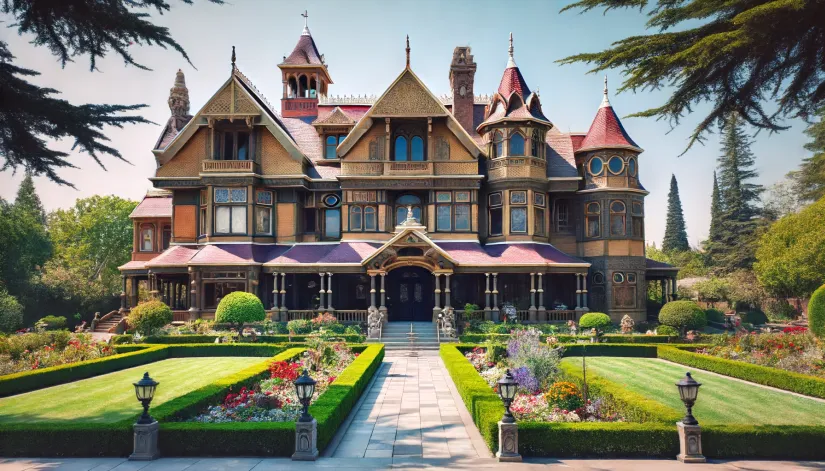
The Winchester Fortune
As mentioned, when William Wirt Winchester passed away in 1881, Sarah inherited a jaw-dropping fortune: $20 million and a 50% stake in the Winchester Repeating Arms Company.
It may not sound like a lot (by today’s standards). Still, back then, $20 million was a mind-blowing amount of money—equivalent to several billions today.
In fact, this kind of money in the 1880s was more than just a financial boon—it was serious power and influence.
Plus, she inherited 50% of one of the most successful arms companies of all time.
The Winchester Repeating Arms Company was known for its innovative repeating rifle, which changed the game for firearms and played a huge role in American history, especially during the Civil War and the westward expansion.
Managing the Wealth
Sarah Winchester was savvy about her newfound wealth. She didn’t dive into the family business but instead focused on managing her fortune in her own way.
With an income of about $1,000 a day, she had plenty of cash flow to support her lifestyle and projects.
One of her boldest moves was heading out to California and buying an eight-room farmhouse in San Jose. This wasn’t just any old house—it became the famous Winchester Mystery House.
Sarah poured money into this ever-growing mansion, which became her passion project and a way to cope with her grief. She constantly expanded and remodeled it, creating a labyrinthine structure filled with oddities and mysteries.
Sarah didn’t just spend her money on the mansion, though. She also gave back to the community.
She funded the William Wirt Winchester Hospital in New Haven—dedicated to treating tuberculosis patients—among other charitable efforts.
Her generosity showed that she wanted to use her wealth to make a positive impact.
Properties and Estates
Sarah Winchester wasn’t just focused on her famous mansion; she was also quite the real estate mogul, with numerous properties in the San Francisco Bay Area.
Estates in the Bay Area
After purchasing the Llanada Villa, Sarah Winchester continued to invest heavily in local real estate.
In 1903, Sarah purchased several properties in Atherton, one of which was bought explicitly for the Marriott family to live in.
She paid $10,000 in gold coins for a home for her niece (Marion “Daisy” Merriman) and her husband (Frederick Marriott III). Daisy had previously moved in with Sarah in 1890 and became her administrative assistant, handling business correspondence and banking.
As of 2018, this home was valued at nearly 7 million dollars.
Sarah also bought 140 acres of land next to the Merriman home to raise and market large carriage horses.
The land purchase was complicated due to unclear titles, so she hired Samuel Franklin “Frank” Leib to sort out the issues.
Unfortunately, the horse business didn’t pan out as planned.
Other Real Estate Investments
Beyond specific homes, Sarah had a broad real estate portfolio across California. She owned multiple rental properties in Palo Alto, banking on the belief that property values near Stanford University would rise.
In 1907, she bought a Tudor-style home in Burlingame Park and commissioned the construction of an ark (or houseboat) to be docked at this property—a popular trend at the time.
She stayed at this property for a while, overseeing the dredging of a canal for her houseboat.
In 1907, Sarah purchased a home at 44 Inglewood Lane, her full-time residence. This home was so attractive that a photo of it was featured in the program for the Panama-Pacific International Exposition of 1915.
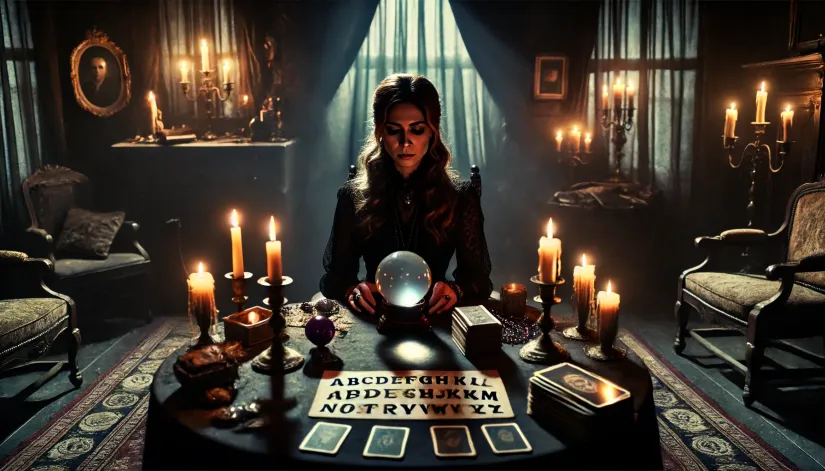
Spiritual Beliefs and Practices
Interest in Spiritualism
Sarah Winchester was deeply into spiritualism (which was a big deal in the late 19th century).
The spiritualist movement was all about communicating with the dead, and it caught the interest of many, especially those grieving the loss of loved ones.
After losing her daughter and husband, Sarah found comfort in spiritualism, hoping to connect with them beyond the grave.
She often sought advice from different mediums and spiritual advisors. And they all claimed they could speak to spirits and offered Sarah guidance.
But one thing had a lasting impact on Sarah Winchester: the alleged curse of the Winchester rifles.
Apparently, during a seance, a medium from Boston told her that the spirits of those killed by Winchester rifles were seeking revenge. That thought must have terrified Sarah.
Her personality changed. She became more reclusive, more isolated.
Influenced by Mediums
Today’s consensus among experts is that the Boston medium may have greatly impacted Sarah’s life.
The idea that her family was cursed by the spirits of those killed by Winchester rifles (which, in Sarah’s mind, was the perfect justification for all the tragedies she had to endure) set in motion actions that would define Sarah more than 100 years after her death.
According to the story, the medium advised her to move west and build a house to appease these restless spirits. This advice was a game-changer for Sarah. And, likely, the reason she bought a farmhouse in San Jose, California.
But the medium’s influence didn’t stop there.
Sarah believed that as long as she kept building, the spirits would be appeased, and she would be safe. This belief led to the endless construction of what we now know as the Winchester Mystery House.
The house’s strange design—with staircases leading nowhere and doors opening into walls—was meant to confuse and deter any vengeful spirits.
For those who want to find out more about this bizarre mansion, we have a whole article about some of the strangest facts about the Winchester Mystery House.
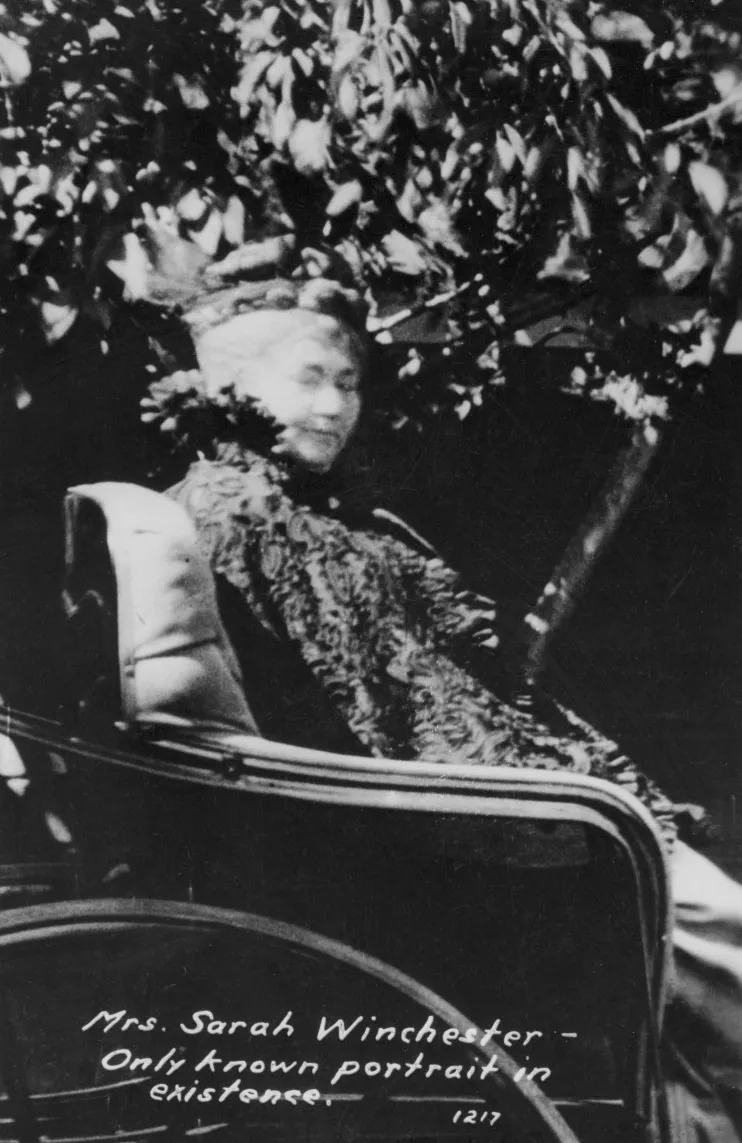
Legacy and Death
Later Years
In her later years, Sarah Winchester’s life was pretty quiet and focused. She continued to work on her San Jose mansion, even as her health took a downturn.
Arthritis made it tough for her to get around, but she still oversaw the endless construction from her wheelchair.
She wasn’t completely cut off from the world, though.
Sarah Winchester continued donating money to local hospitals and supported the arts, showing her philanthropic side.
She also shared stories with her staff and occasional visitors, giving glimpses into her fascinating life. Despite her reclusive nature, these moments offered a bit of connection and insight into her personal reflections.
Death and Aftermath
Sarah Winchester passed away peacefully in her sleep on September 5, 1922, at the age of 82.
Her death brought an end to the nonstop construction of her mansion, which had been her focus for almost 40 years.
After her death, the estate’s contents were auctioned off, with many items going to her niece and favorite charities.
The mansion itself, known for its bizarre architecture and mysterious vibe, was sold and eventually turned into a popular tourist attraction. People were, and still are, fascinated by the house and the story behind it.
Sarah was remembered by those who knew her as kind but deeply affected by her personal tragedies and the massive responsibility of her inheritance.
To the public, she became an almost mythical figure, with countless stories and legends surrounding her life and the mysterious Winchester House.
Her legacy lives on through this mansion, which stands as a testament to her unique vision and the intrigue she continues to inspire.
Frequently Asked Questions
What is the story behind Sarah Winchester?
Sarah Winchester, born in 1839, was the widow of William Wirt Winchester, the heir to the Winchester Repeating Arms Company.
After the deaths of her daughter Annie, her husband, and her father-in-law, Sarah inherited a vast fortune, including a 50% stake in the company. Plagued by grief and influenced by spiritualism, she moved to California and started constructing the Winchester Mystery House.
The continuous construction, guided by spiritual advisors, was believed to be an effort to appease the spirits of those killed by Winchester rifles.
Who did Sarah Winchester leave her fortune to?
Sarah Winchester left the majority of her estate to her niece, Marion Marriott, and various charities.
Her will was very detailed, ensuring that her wealth was distributed according to her specific wishes, with significant portions going to health and educational institutions.
What happened to Sarah Winchester’s child?
Sarah Winchester’s only child, Annie Pardee Winchester, was born on July 12, 1866. Tragically, Annie died just over a month later, on August 24, 1866, from marasmus.
What happened to the Winchester house after Sarah died?
After Sarah Winchester’s death on September 5, 1922, the Winchester Mystery House was sold and later became a tourist attraction. The house, known for its bizarre architecture and mysterious past, continues to draw visitors intrigued by its history and legends.
What is the movie about Sarah Winchester?
The movie Winchester, released in 2018, is about Sarah Winchester. It stars Helen Mirren as Sarah Winchester and depicts a fictionalized account of her life and the construction of the Winchester Mystery House, focusing on the supposed hauntings and supernatural elements associated with the mansion.
What disease did Annie Winchester have?
Annie Winchester, Sarah, and William’s only child died of marasmus, a severe form of malnutrition that prevents the body from getting the nutrients needed for growth and development.

